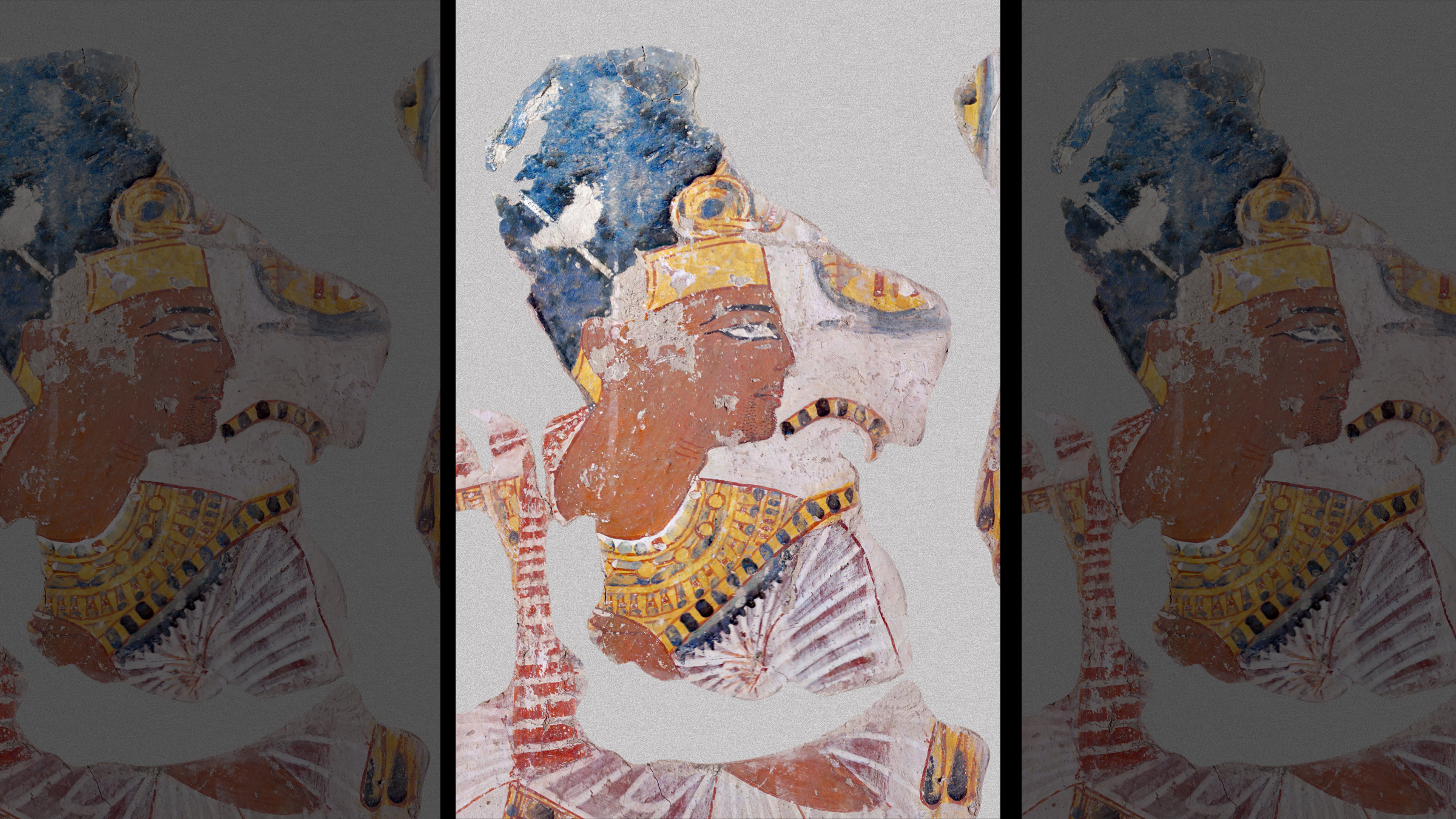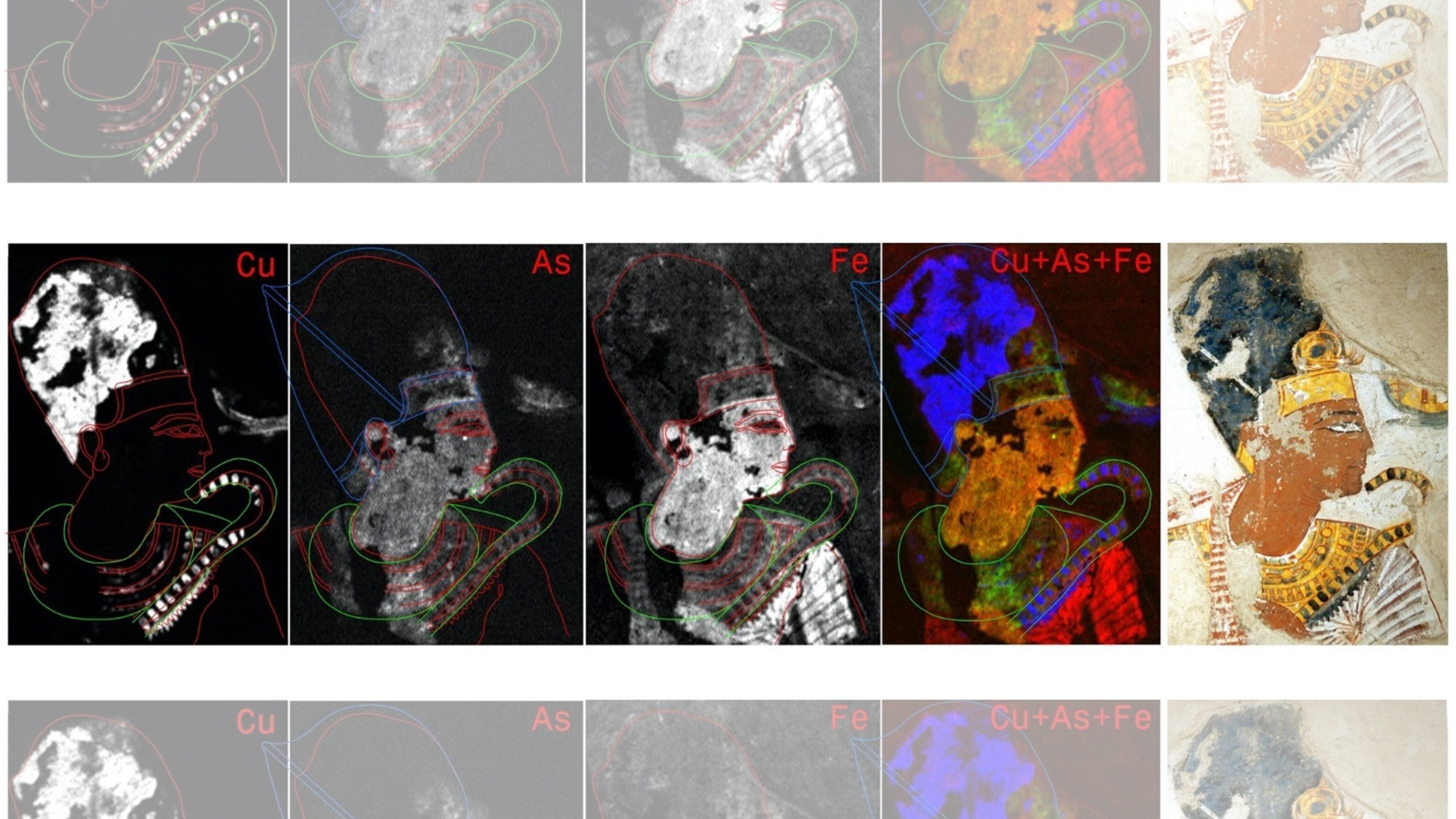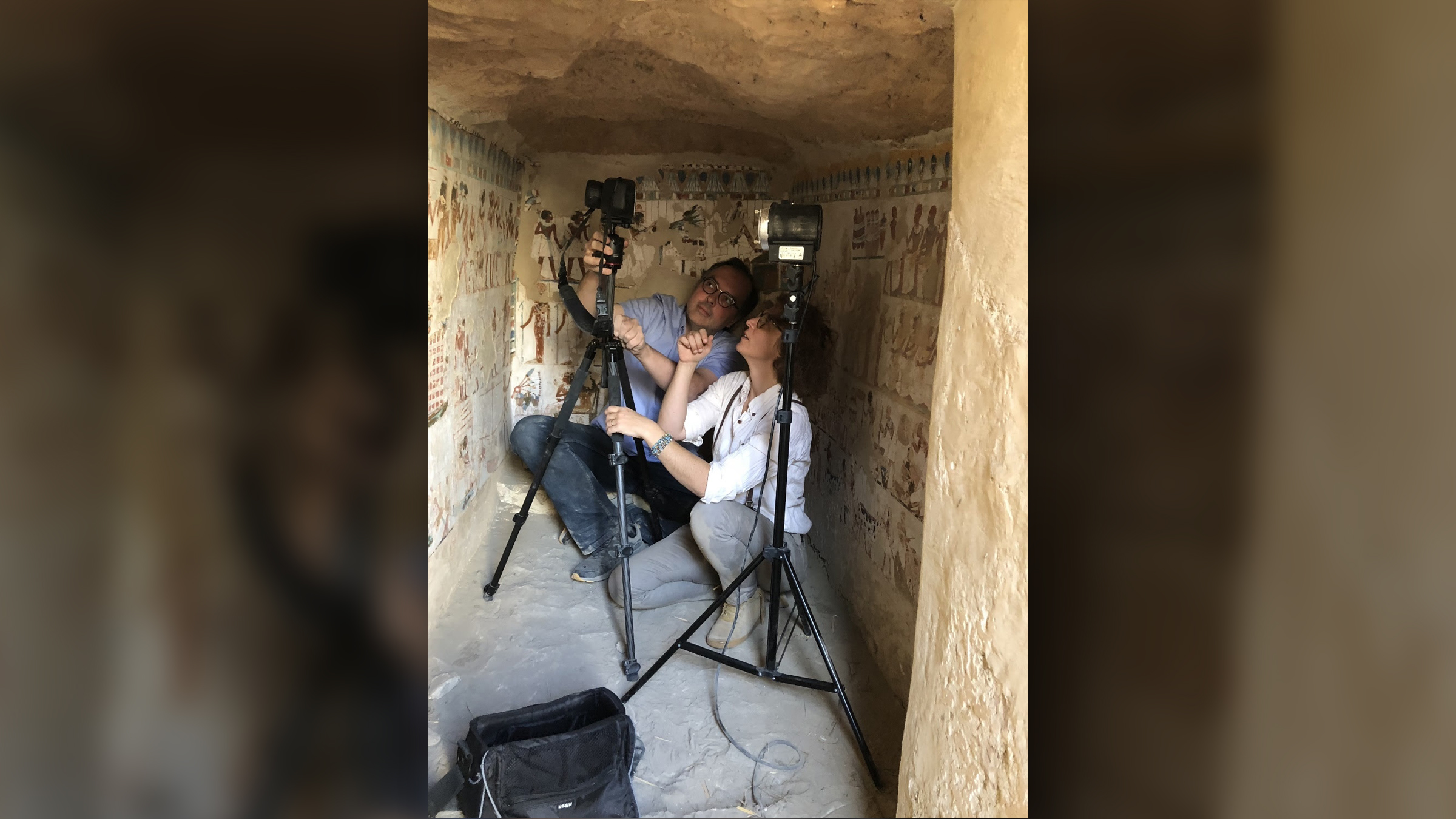
More than 3,000 years ago, ancient Egyptian artists flubbed a royal portrait that was discovered in a tomb within a vast necropolis, a new study suggests.
The painting, of the pharaoh Ramesses II (reign circa 1279 B.C. to 1213 B.C.), is in the tomb of an official named Nakhtamun, who was buried near Thebes (modern day Luxor). In the painting, the pharaoh has some stubble on his face and is facing a figure whose features cannot be seen well, according to a new study published Wednesday (July 12) in the journal PLOS One.
This has led past scholars to propose that the painting shows the pharaoh mourning the death of his father, the pharaoh Seti I (reign circa 1294 B.C. to 1279 B.C.), the team wrote. But a new scan of the portrait suggests otherwise.

Using a portable version of X-ray fluorescence imaging (XRF), a technique that uses X-rays to determine the chemical composition of an object, the team scanned the Ramesses II painting and one other artwork from the necropolis, revealing details that were not visible with the naked eye.
However, not everyone agrees with the team's new interpretations of the Ramesses II painting nor with the study's suggestions about when this artwork was created.
Related: Why does ancient Egypt's distinctive art style make everything look flat?
Reinterpretation of Ramesses II
The team found that Ramesses II is actually facing Ptah, an ancient Egyptian god associated with craftspeople. The scan "shows that Ramesses II [stands] under a cult canopy, while the enthroned figure in front of him is clearly the god Ptah, not his deceased father Seti I," the team wrote in the study.
The team also found that Ramesses II was depicted with a "protrusive Adam's apple," the team wrote, noting that this is "a detail that is interestingly never shown in ancient Egyptian art."
Moreover, the pharaoh was originally depicted wearing what the ancient Egyptians called a "shebyu collar," which consists of "several voluminous chains of gold formed by large and heavy lenticular beads," the researchers wrote in the study. This collar was popular in the 20th dynasty (circa 1186 B.C. to 1070 B.C.) but was not used during Ramesses II's reign, the team said. According to the researchers, the shebyu collar was painted over and replaced with a "wesekh" necklace, a flat piece of jewelry that was worn during Ramesses II's rule.

Based on the necklace discovery, the team thinks the painting was originally drawn in the 20th dynasty, decades after Ramesses II died. It's likely that when the artists realized they had painted the wrong type of necklace on Ramesses II, they corrected it, the study authors wrote.
The protruding Adam's apple on Ramesses II may have been added during this repainting, possibly by mistake, study first author Philippe Martinez, a molecular archaeologist at Sorbonne University and the French National Center for Scientific Research (CNRS), told Live Science in an email. It's unclear why Ramesses II is depicted with stubble on his chin. This is uncommon as a pharaoh would usually be shown shaven or with a beard.
Peter Brand, a history professor at the University of Memphis and author of the book "Ramesses II: Egypt's Ultimate Pharaoh" (Lockwood Press, 2023), who was not involved in the study, disagreed with some of the findings. Brand said his own research indicates that shebyu collars were worn during Ramesses II's reign, and he thinks the painting dates to late in Ramesses II's tenure.
"The tall proportions of the king's blue crown and his rather 'chisel'-shaped nose are consistent with the later years of his reign as seen in reliefs at Karnak," a temple complex in Thebes that was dedicated to the god Amun-Ra, Brand said. He also disagreed with the authors about the protruding Adam's apple in the painting, saying it is not unique in ancient Egyptian portraits.
In addition to the painting showing Ramesses II, the team analyzed another tomb painting from the necropolis. For this painting, which depicts a tomb owner named Menna, the scan revealed more detail about an arm that was painted over but is still readily visible to the naked eye.







